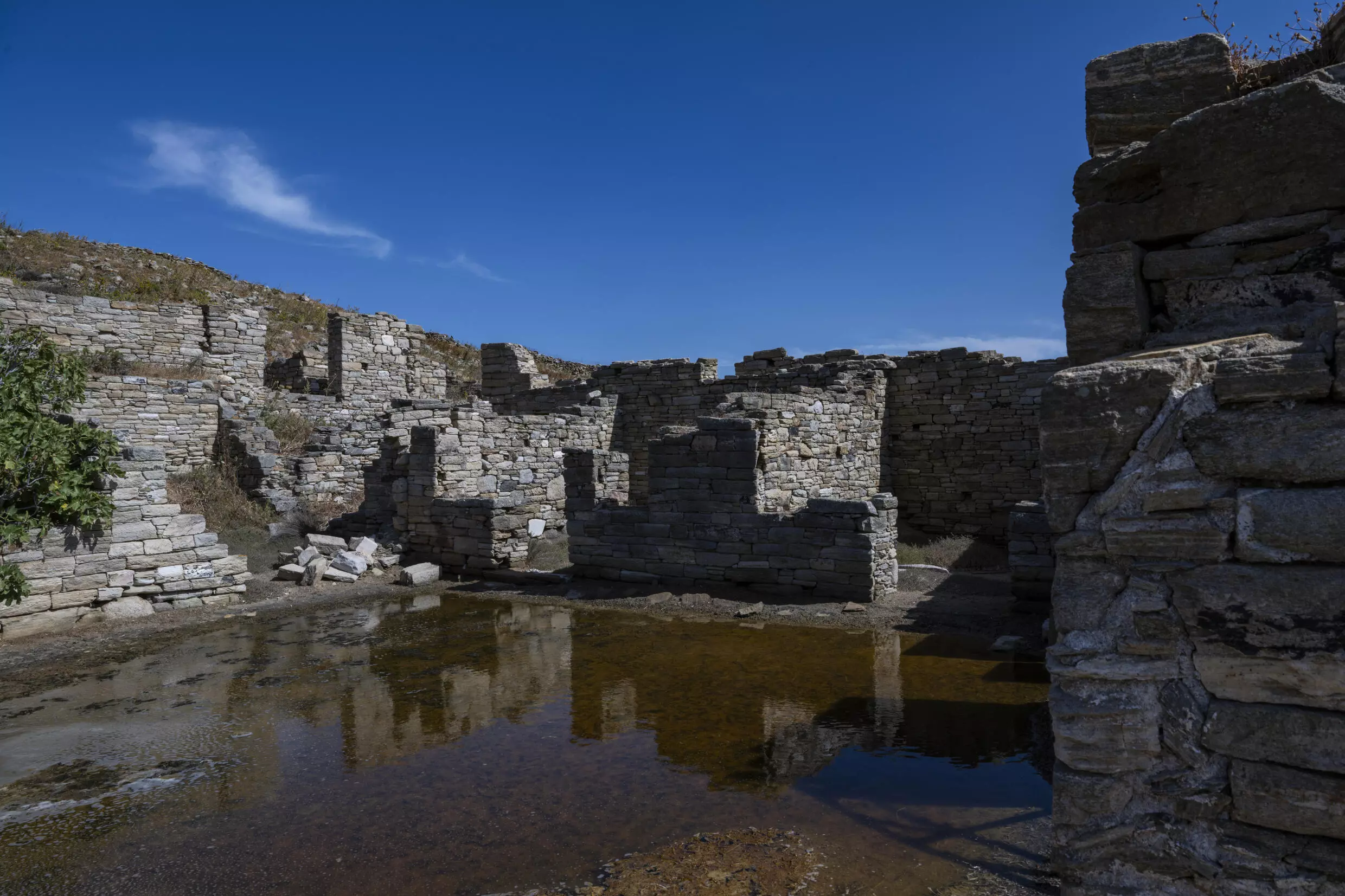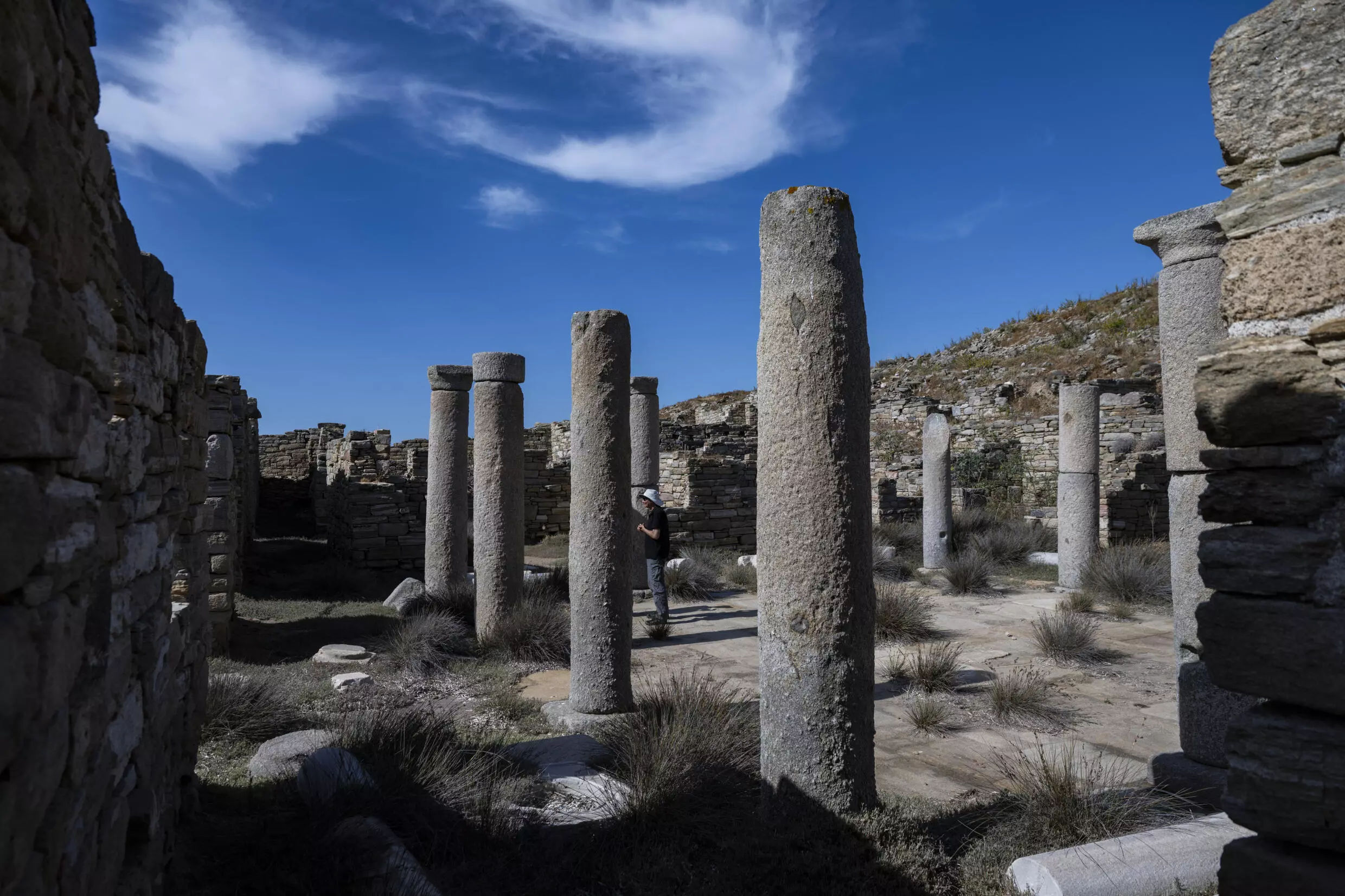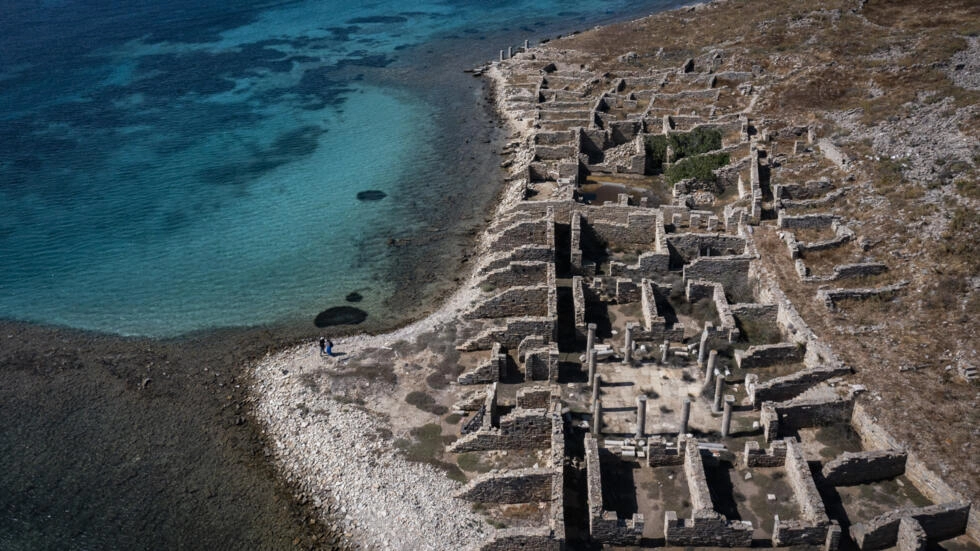Just a brief boat ride from Mykonos' bustling nightlife lies Delos, a UNESCO World Heritage site and one of the most significant sanctuaries of the ancient Greek and Roman world.
Surrounded by vibrant azure waters, Delos' 2,000-year-old buildings offer a glimpse into daily life during the Hellenistic and Roman periods.
However, scientists warn that due to rising sea levels brought about by climate change, this historical site may disappear within decades.
"Delos is condemned to disappear in around 50 years," stated Veronique Chankowski, head of the French archaeological school of Athens (EFA), which has been excavating the site for the past 150 years under license from the Greek state.
The island's silent drama starkly contrasts with the neighbouring Mykonos, which attracts hundreds of thousands of visitors annually. The most severe structural damage is evident in areas that once housed trade and storage buildings in the first and second centuries BCE and are now inaccessible to visitors.

Seawater is eroding the walls, particularly in winter, as Jean-Charles Moretti, the French mission's director on Delos, noted. "Every year in the spring, I notice that new walls have collapsed," said Moretti, who has been involved in digs on the island for the past 40 years.
In the last decade, sea levels have risen by up to 20 metres in some parts of the island, added Chankowski. A study by Aristotle University in Thessaloniki found that increasing temperatures combined with high humidity levels can significantly affect the chemical composition of materials used in cultural heritage monuments.
A steady stream of tourists from Mykonos, who often stray from permitted areas, exacerbates the problem. In the summer, only a few archaeologists are available to supervise the site.
To the ancient Greeks, Delos was the birthplace of Apollo and Artemis, deities honoured by both Greeks and Romans. At its peak during the Roman era, Delos was a bustling city of around 30,000 people but was looted twice in the first century BCE and eventually abandoned.

For now, wooden support beams shore up some walls, but more robust measures will require a multi-disciplinary response. "All coastal cities will lose significant areas currently located at sea level," warned Greek archaeologist Athena-Christiana Loupou, who guides groups through the site.
Reflecting on the broader environmental challenges, Loupou remarked bitterly, "We replaced plastic straws with paper straws, but we lost the war to protect the environment."
Read more: Greek UNESCO World Heritage Sites
(Source: France 24)

